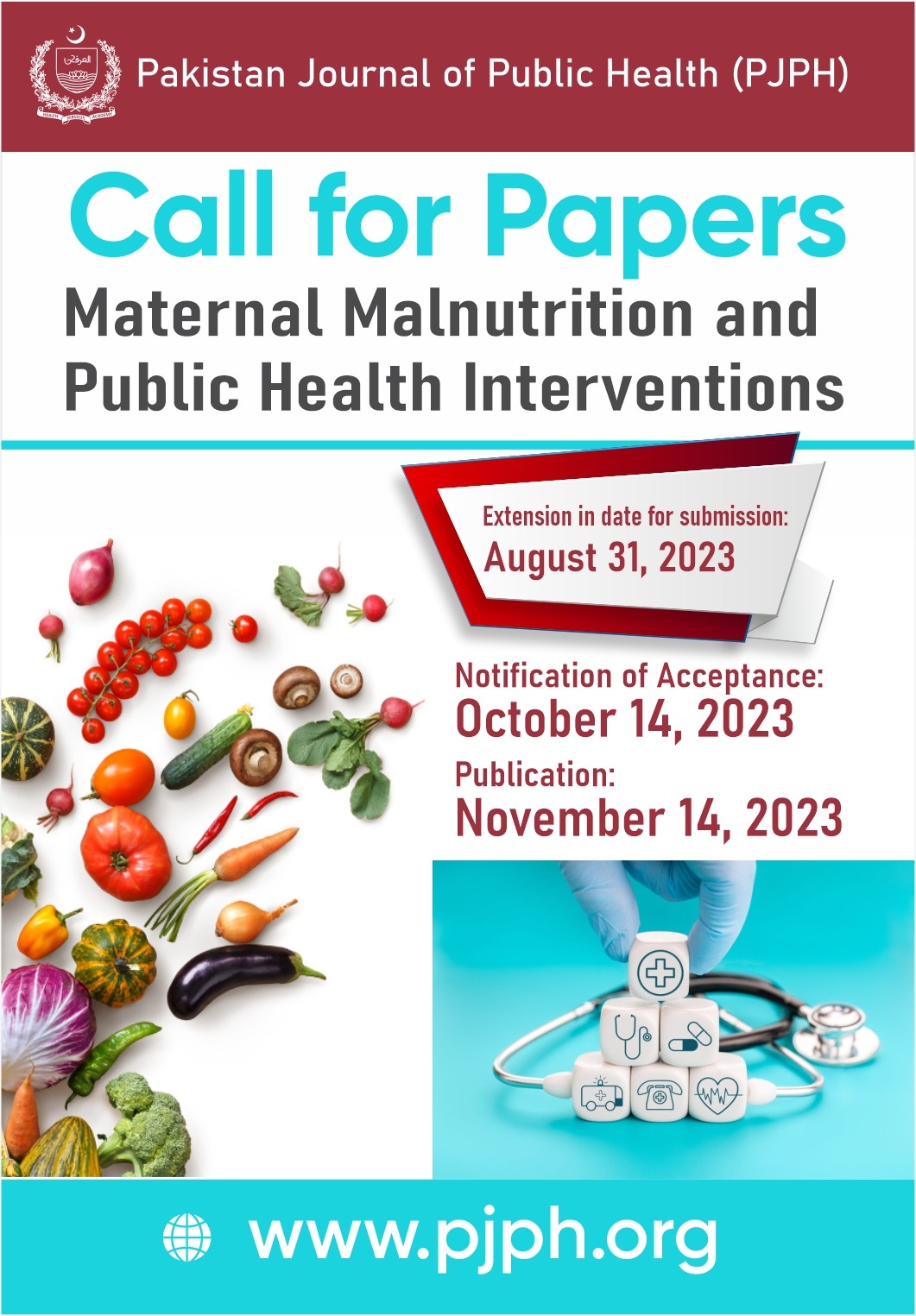CRIMEAN CONGO HEMORRHAGIC FEVER IN PAKISTAN: CASE CONTROL STUDY, 2012-2015
DOI:
https://doi.org/10.32413/pjph.v8i1.98Keywords:
Animal handler, butchers, cchf, risk factorsAbstract
Background: Sporadic cases of CCHF continue to occur since first known fatality in 1976 in Pakistan. This study was conducted to identify the population groups more at risk to acquire CCHF infection.
Methods: A case-control study comprising record review of the lab investigations sent to National Institute of Health, Islamabad was conducted from 2012 to 2015. A case was defined as any blood sample confirmed to be CCHF using RT-PCR testing. A total of 255 confirmed cases and 510 sex matched controls were randomly selected during January 2012-December 2015. Controls were selected from the samples which tested negative for CCHF on RTPCR. Data from all suspected cases were collected on a structured questionnaire. Univariate and multivariate analysis was conducted to find associations using Epi-Info and SPSS.
Results: among 255 confirmed CCHF cases male were 80%. Baluchistan reported maximum number of cases (55%).The most affected age group was above 41 years (n=143, attack rate 0.45/100,000). In multivariate analysis the risk factors remained significantly associated with the CCHF were contact with Positive CCHF case (OR 3.77; 95% CI 2.49-5.71), health care workers (OR 3.76; 95% CI 2.22-6.36), butchers (OR 2.97; 95% CI 1.19-4.3.25), animal handlers (OR 2.55; 95% CI 1.12-2.72) and tannery workers (OR 2.13; 95% CI 1.22-2.72). Drivers and persons with travel history to endemic areas were significant in univaraite analysis but remained insignificant in multivariate analysis.
Conclusion: Contact with the positive CCHF case and workers like health care professionals, butchers, animal handlers and tannery workers are at increased risk for CCHF. Educational intervention is recommended to control the CCHF.






